Rural England Survives
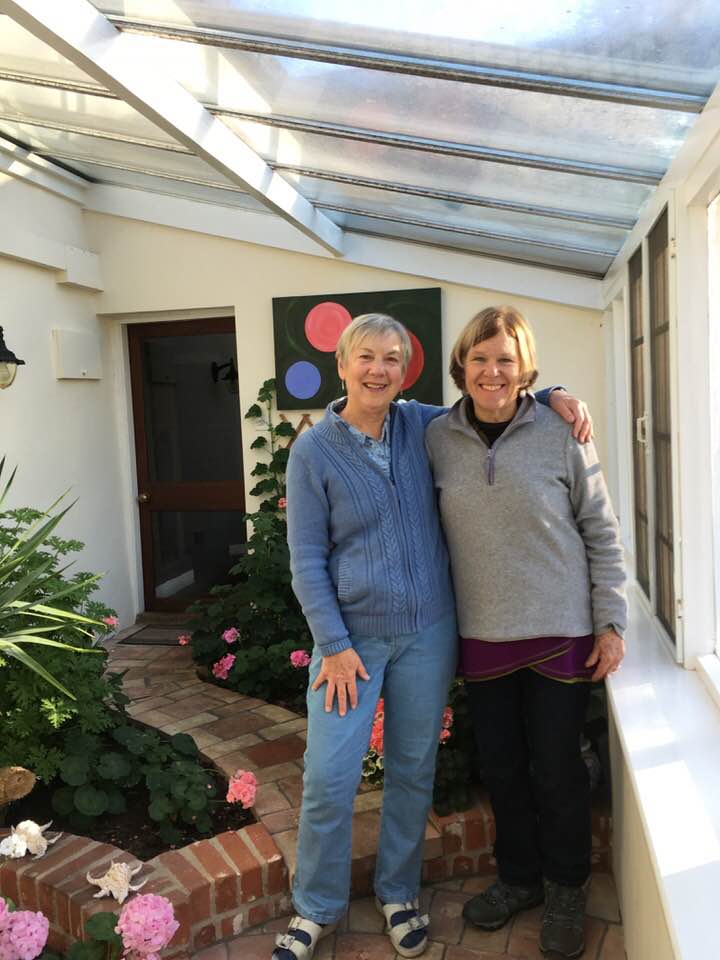
During our two month stay in the UK, we went on two weekend trips: one to visit my college roommate, whom I haven’t seen in 50 years. The second to Bath and Lyme Regis to visit the grave of Henry’s grandparents and to visit his sister and brother in law near Lyme Regis, a famous seaside community on the South Coast where Mary Anning pioneered the study of fossils in the collapsing cliffs.
My roommate from Mt Holyoke College 1967, Cynthia Parry, lives in an ancient house in Suffolk, a county of East Anglia along the North Sea. Her husband, Martin, is an eminent geographer who has worked on climate change since the 1970s. They are in an idyllic location. We slept in the oldest room, wide oak beams, low ceilings and a little off the horizontal and vertical vertical.
Not far away we visited their local church, St Andrew Ileketshall. The church like many in Suffolk dates back to the Saxon era, is built of flint, and has an unusual round tower. East Anglia has 180 round church towers but they are rare in other parts of England
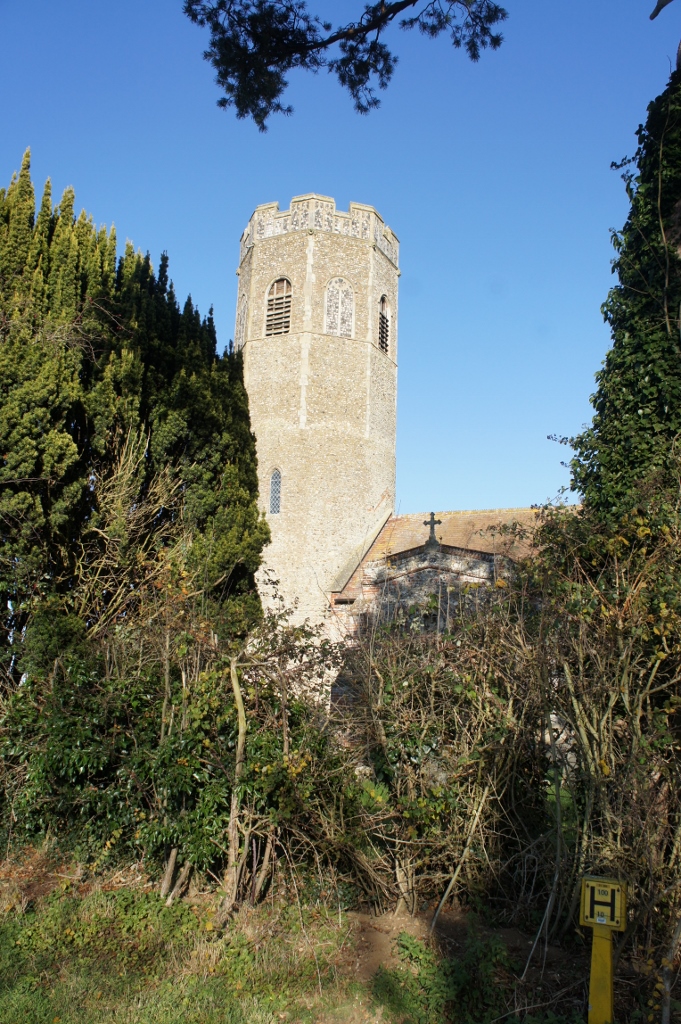
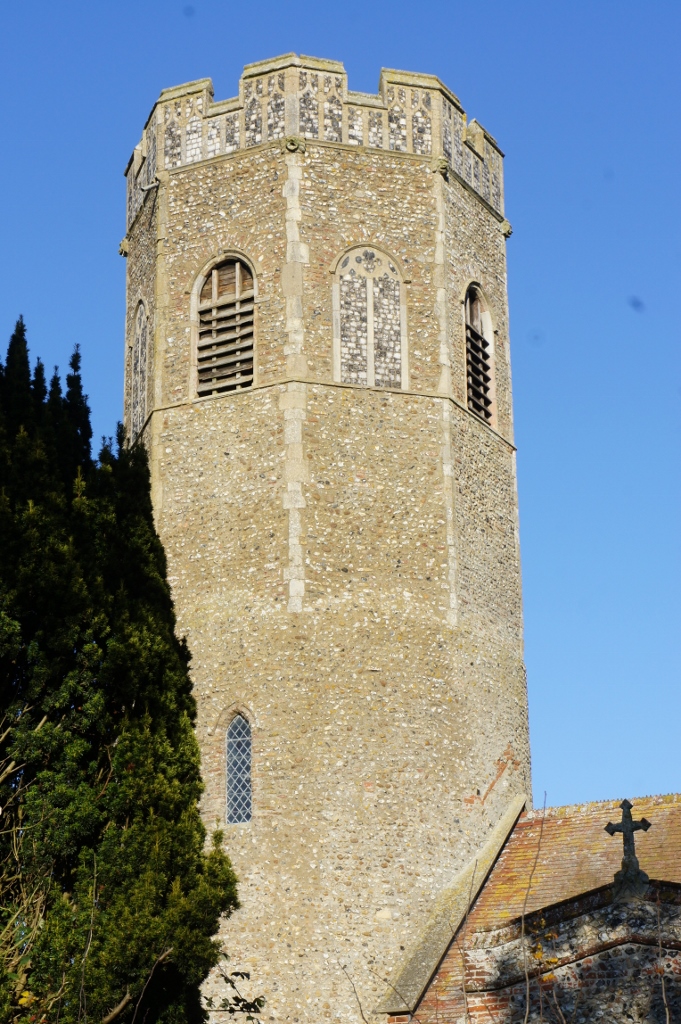
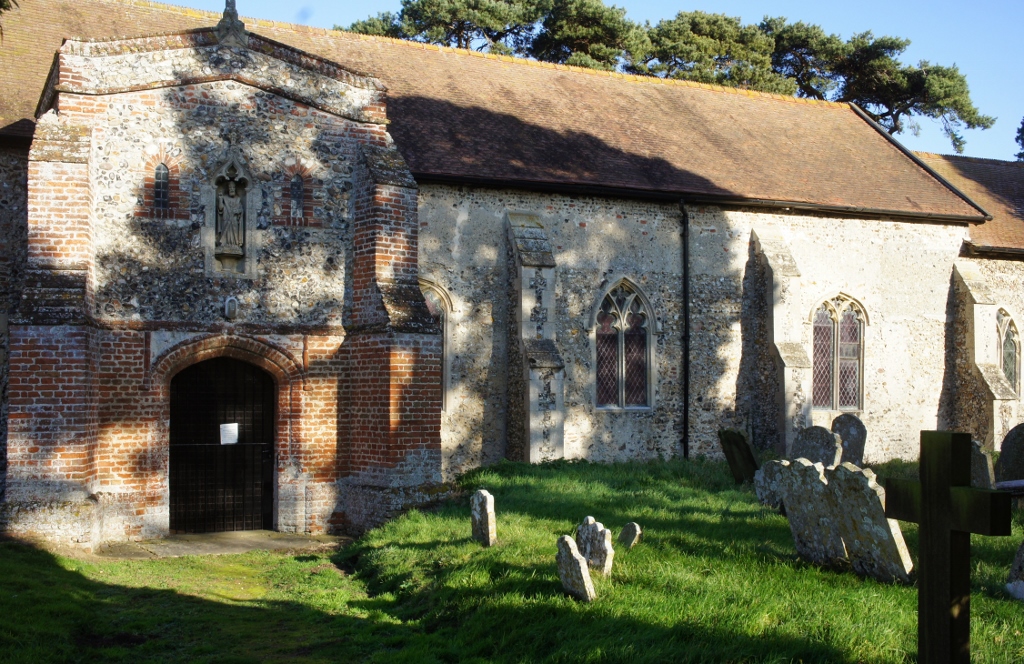
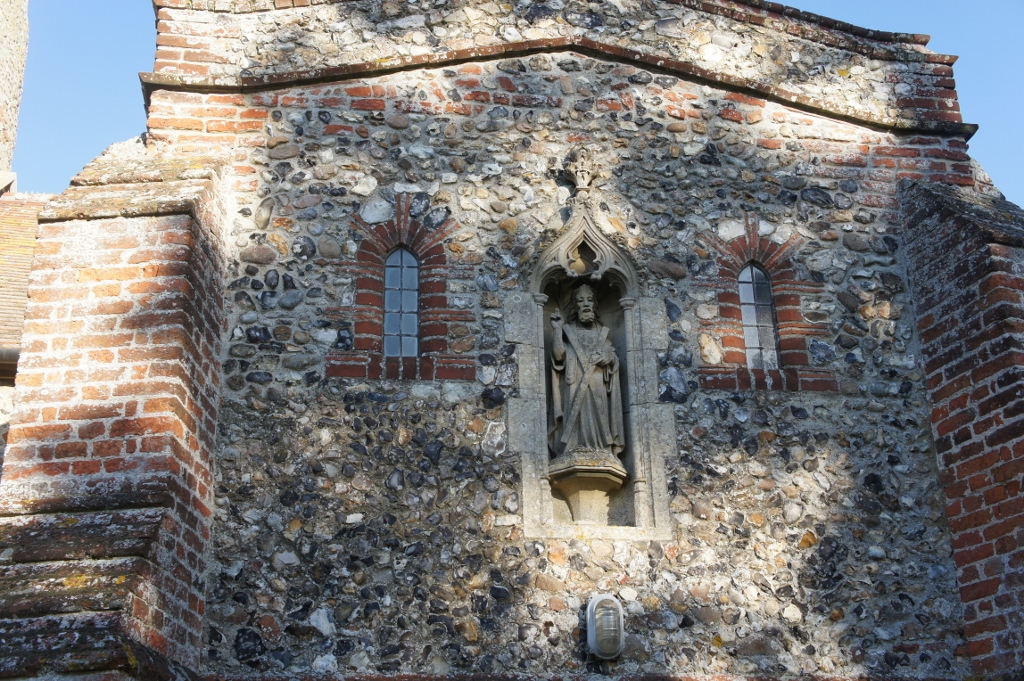
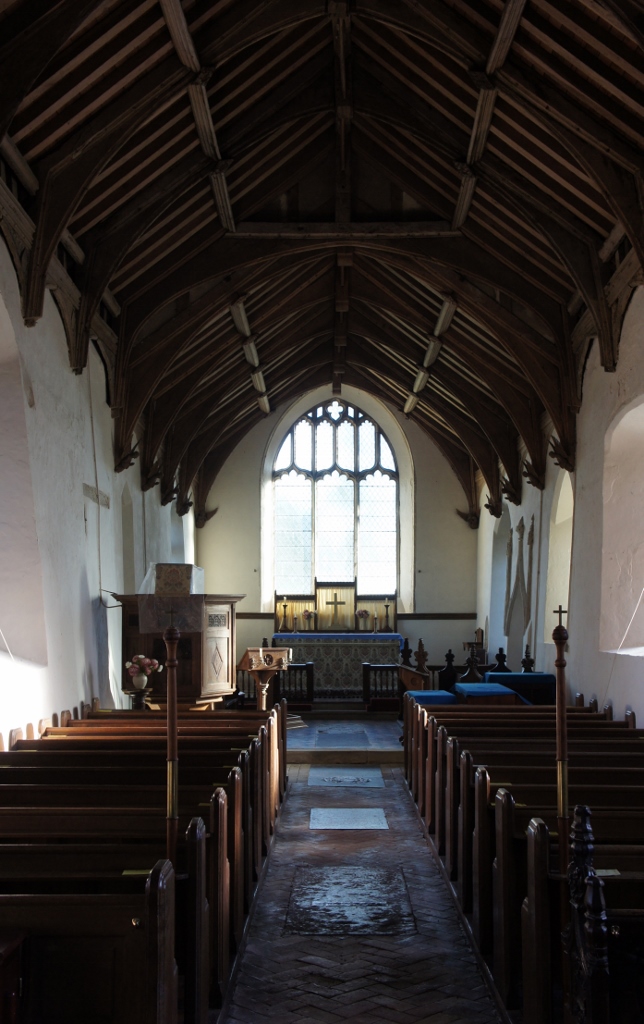
But most amazing of all are the murals inside, which were painted in the 14th century and rediscovered in 2001. The entire nave was originally covered with paintings, but many were lost or unstable, so only a segment of them have been restored. The result is an extraordinary group of ephemeral drawings, seemingly an underpainting. Of these drawings the most unusual is the Wheel of Fortune. It represents a man pinned to the wheel and others turning it. We see four stages of fortune, pulling up from the left, sitting in majesty on the top, thrown down to the right, underneath the wheel.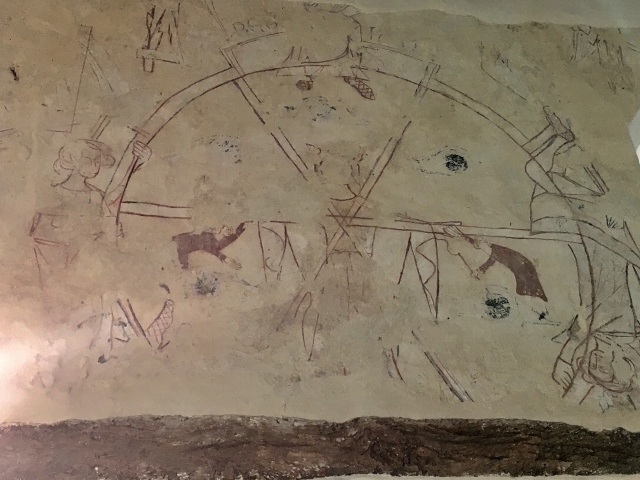
There are only two surviving examples in murals, this one and in the Rochester Cathedral form the mid thirteenth century.The subject appears often in manuscripts as Fortune, blind, deaf two faced, giving and taking favors as she pleases, based on a sixth century philosophical text by Boethius. He states though that God’s plan is greater than these random actions
Another mural shows an architectural outline that is more elaborate than existed in any other 12th century wall painting. Cynthia is the church warden of this important church. Rural churches like this one are barely surviving. They have to pay an annual fee to the Church of England to support a visiting minister every three weeks. The church as only about 12 regular attendees. And there are many many of these small rural churches in England like St. Andrews.
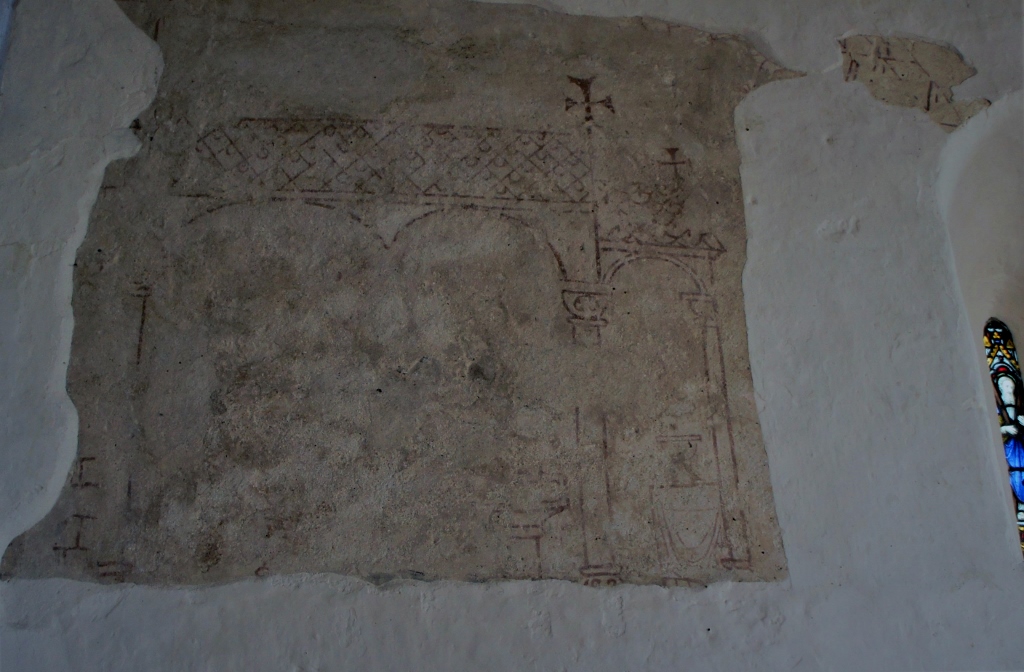
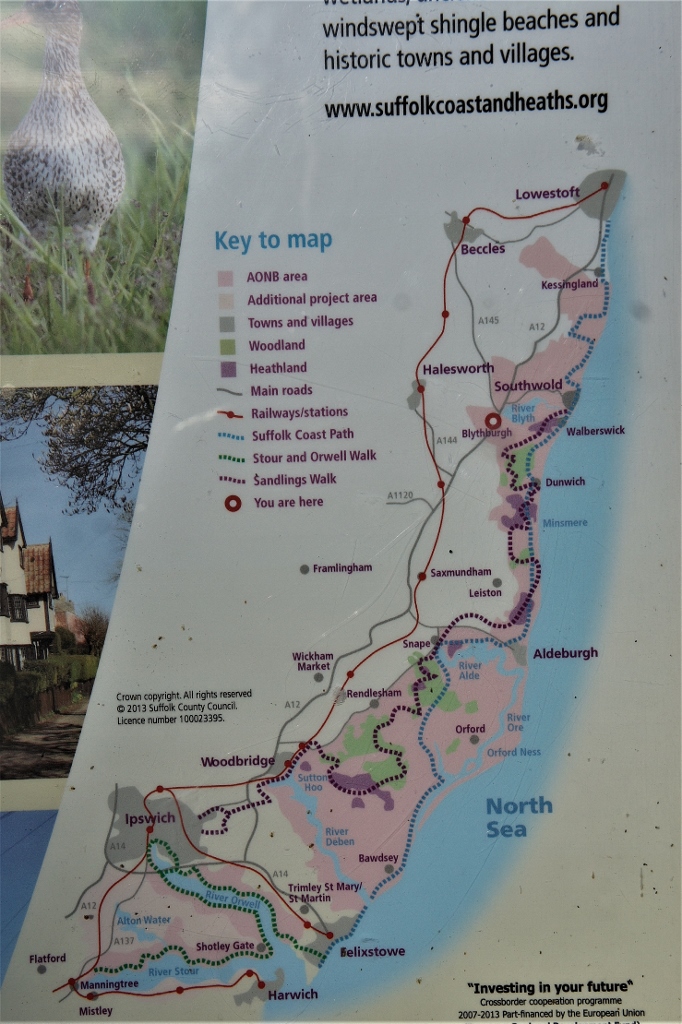
Cynthia and Martin took us on a wonderful tour along the coast ( see map above) We visited a much larger church in Blythburgh entirely made of flint! It had angels carved of wood in the ceiling and other intriguing details like this man ringing a bell. The site shows evidence of burials from the 7th century. The present church is from the fifteenth century.
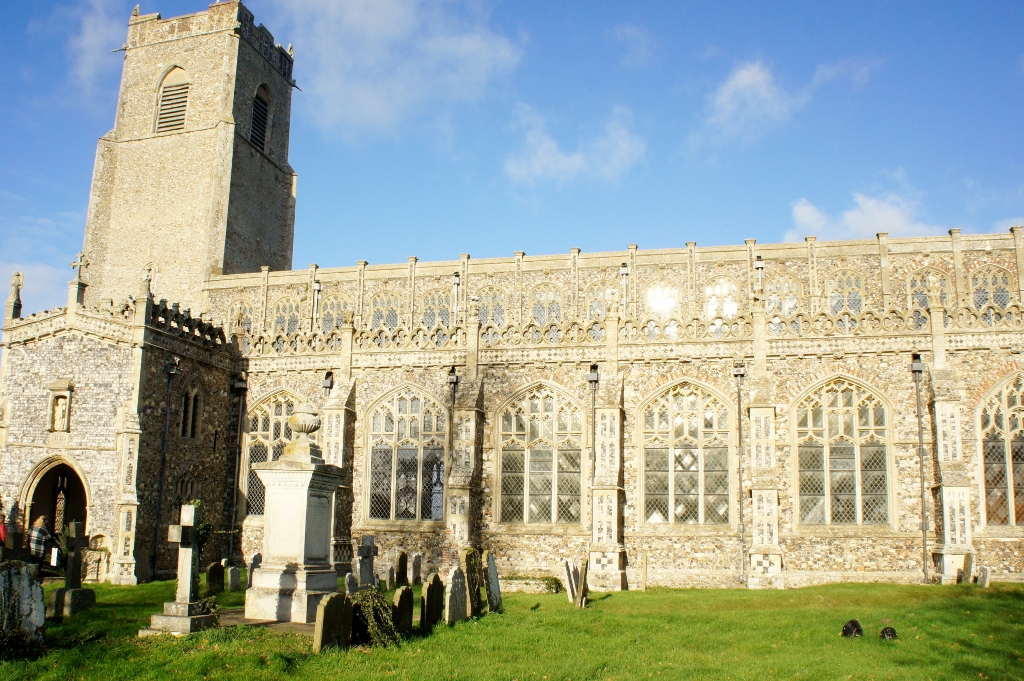
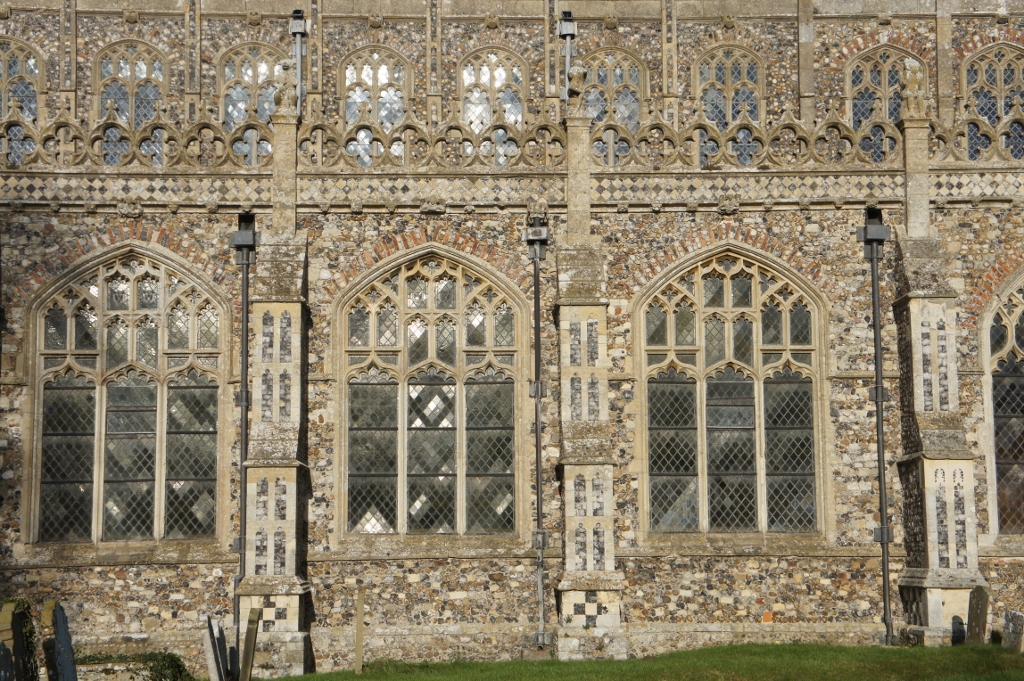
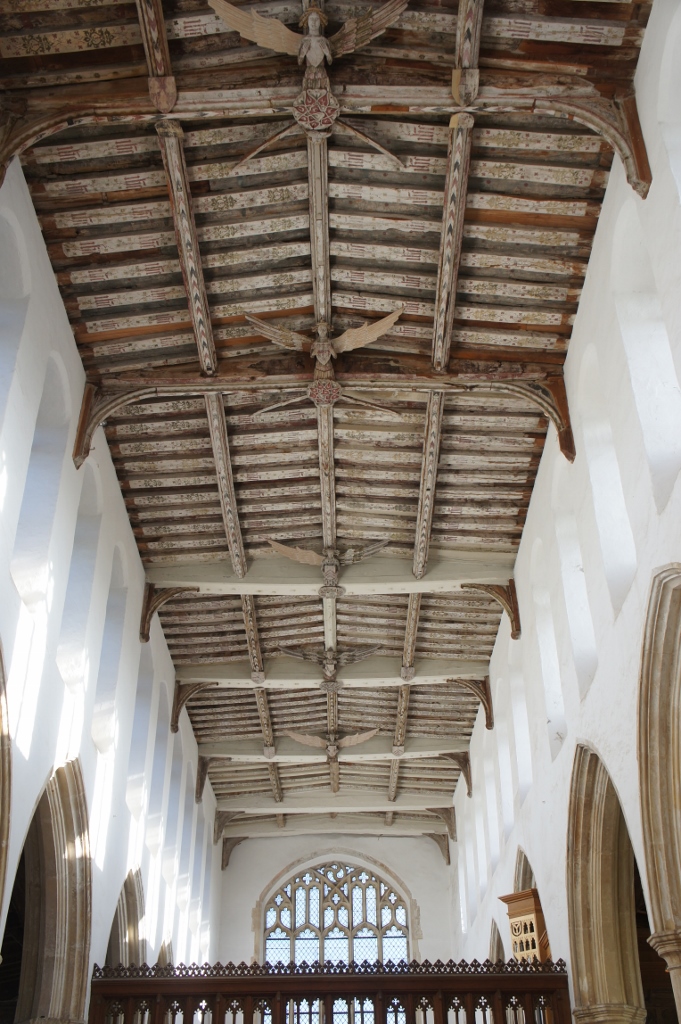
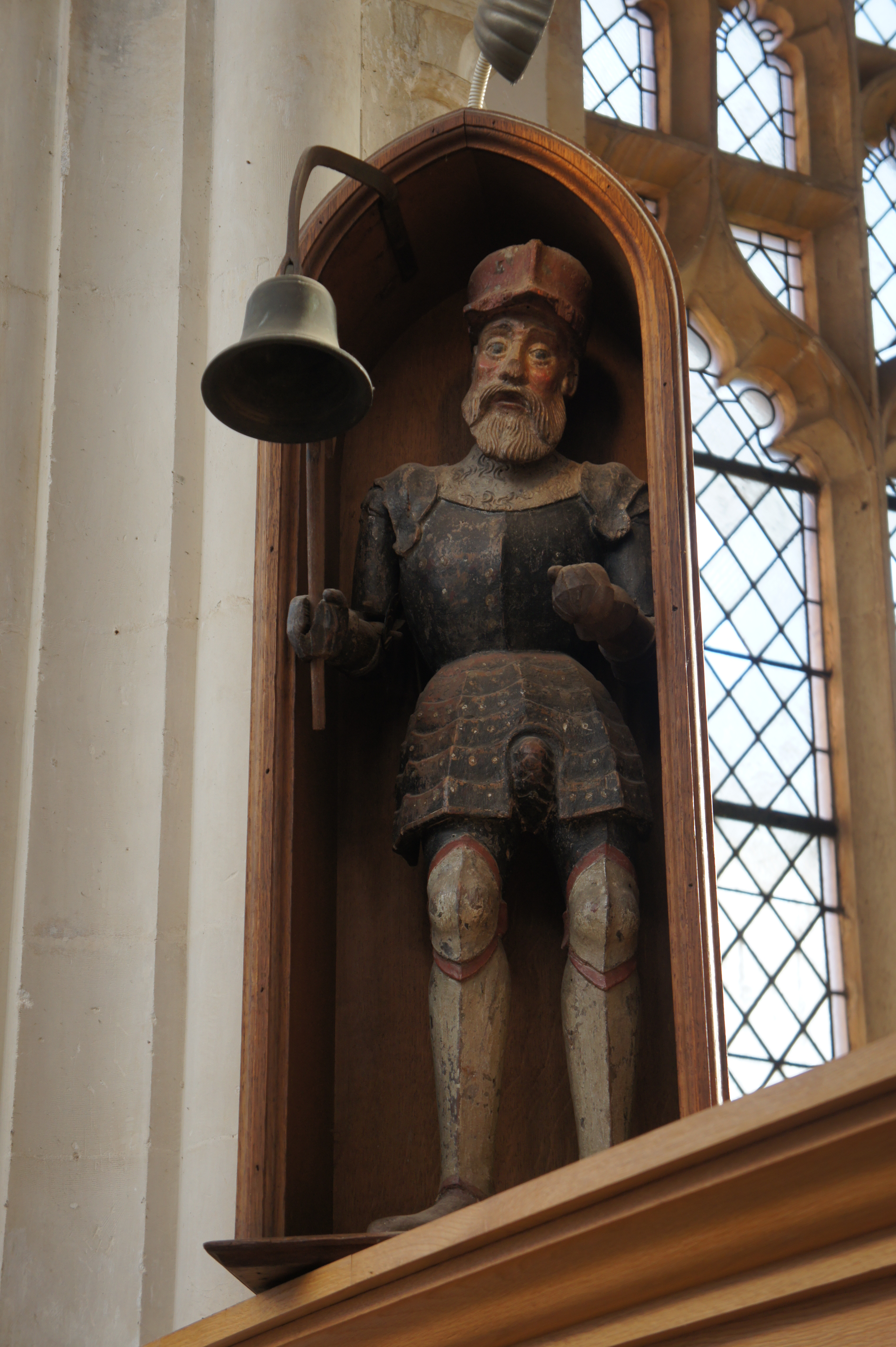
From there we went to see the Orford Keep from the time of Henry II ( 1133-89). A keep is a fortified tower. It usually is in the middle of a castle ( as a prison). We got there at sunset so did not climb up to the top.
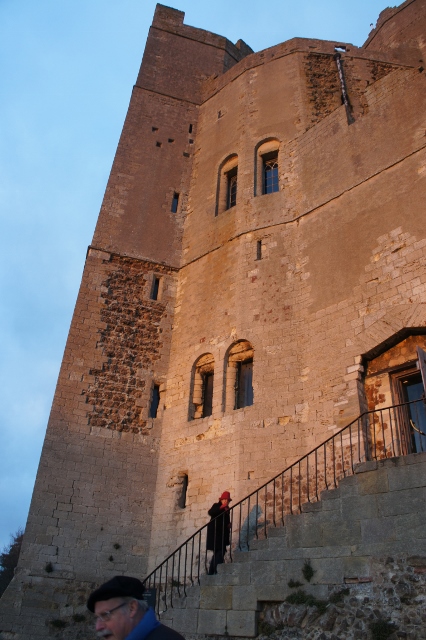
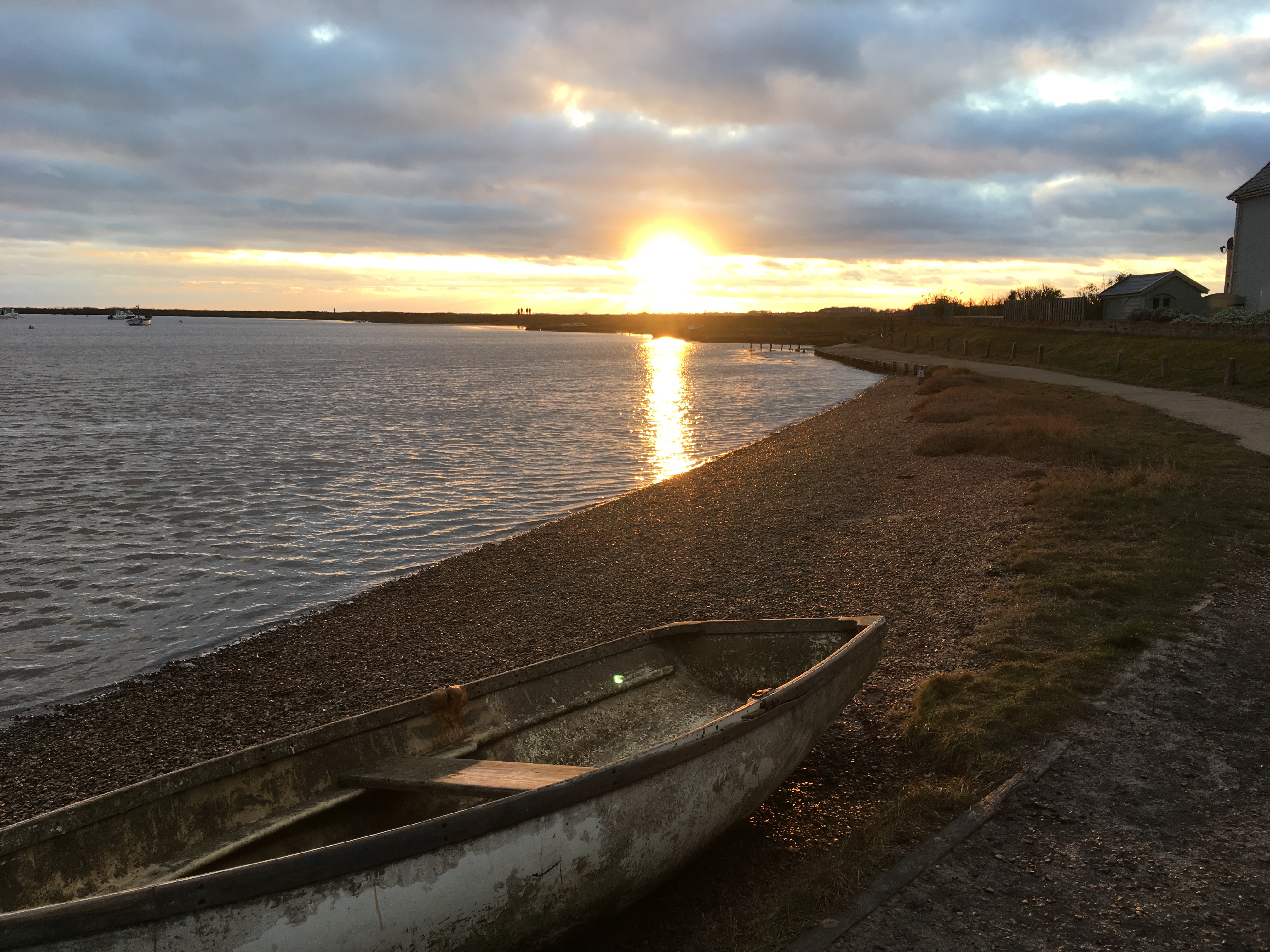
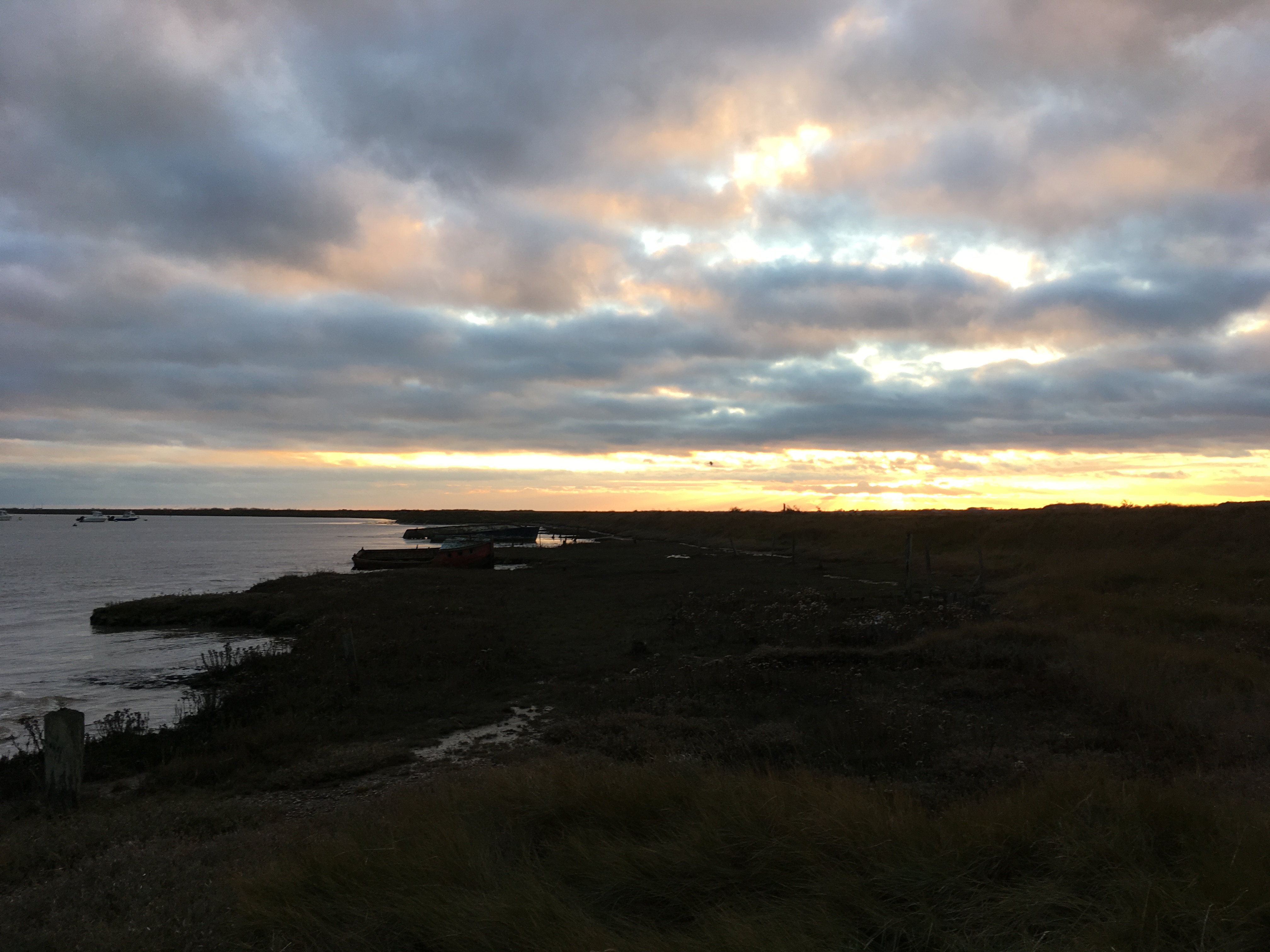
Our last stop with Cynthia and Martin was Snape Maltings, a strange name that means malt used to be made there. Today it is the center of the Benjamin Britten festivals, although no music was going on when we were there. It has ongoing residencies and events. For me the absolute highlight were the sculptures by Henry Moore and Barbara Hepworth set against the preserved marsh lands near by.
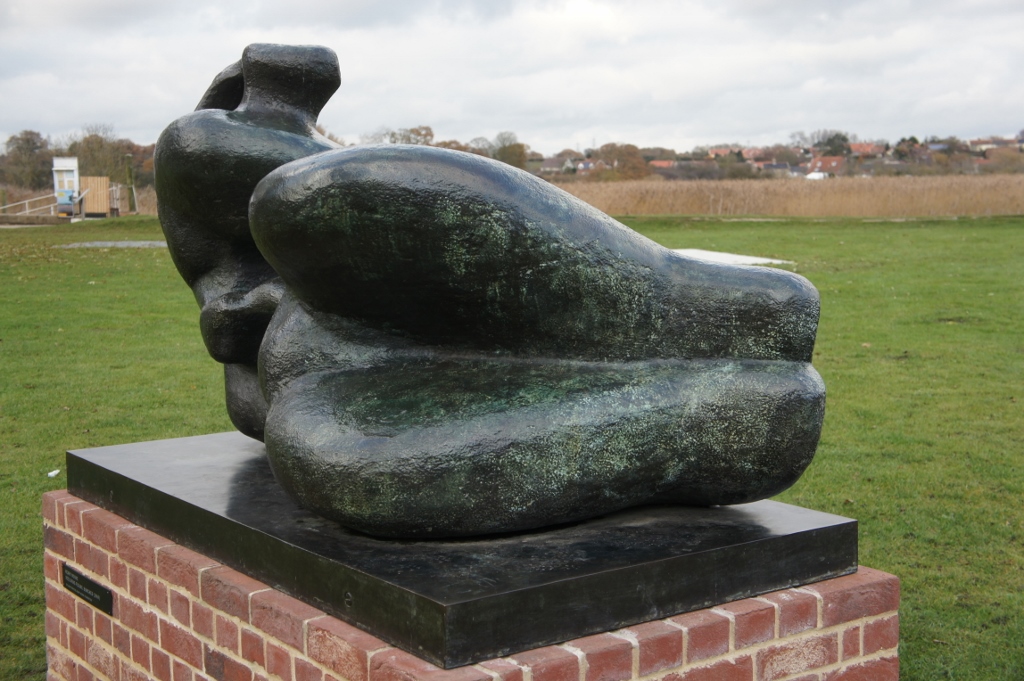
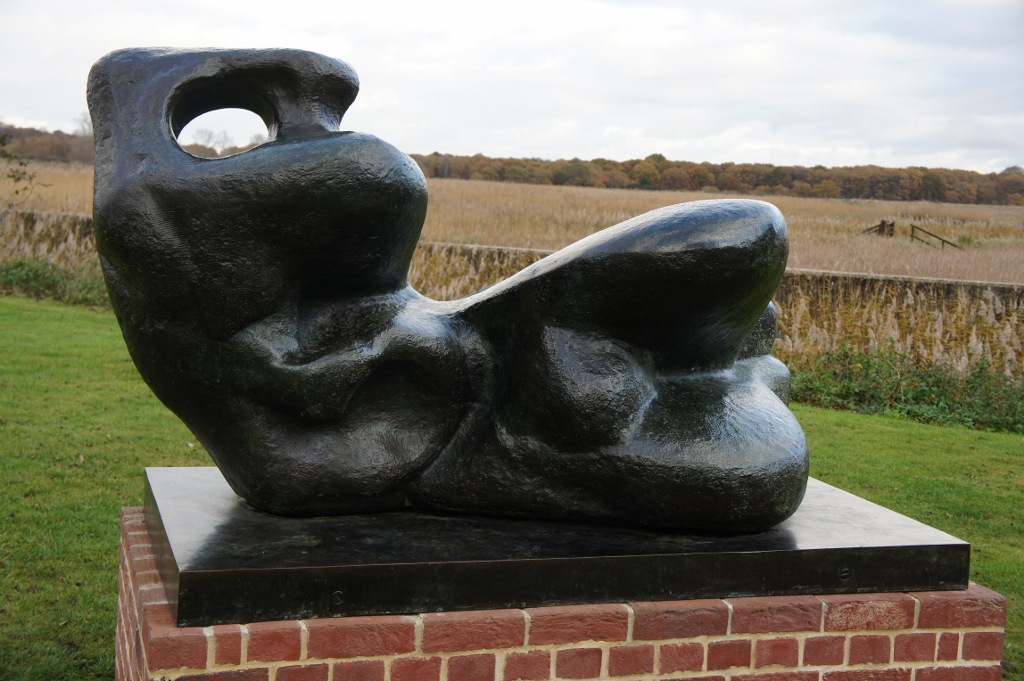
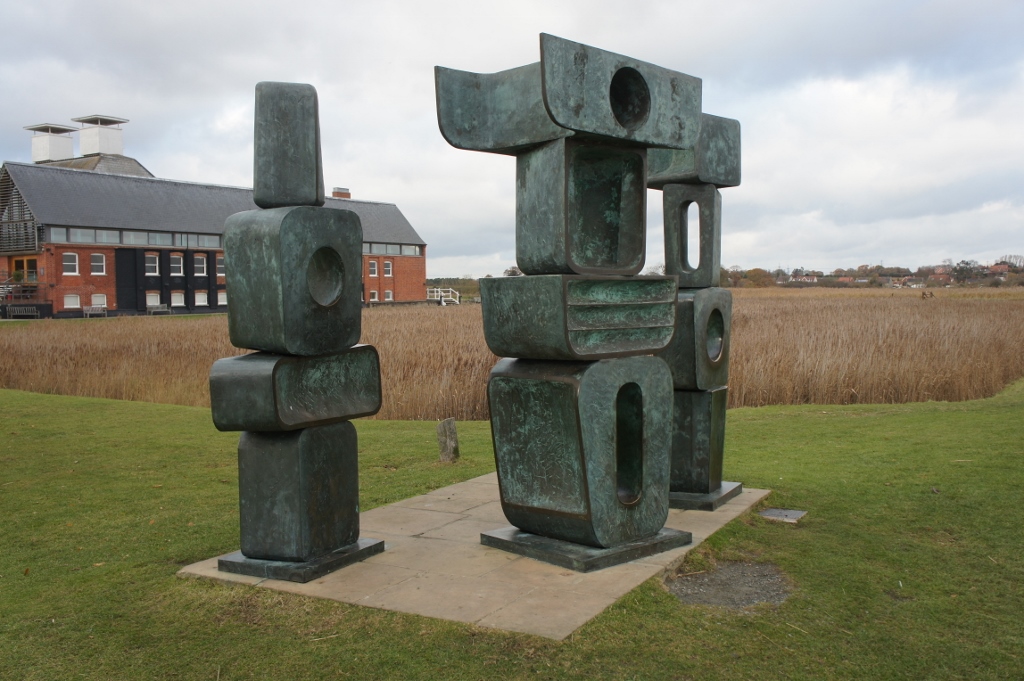
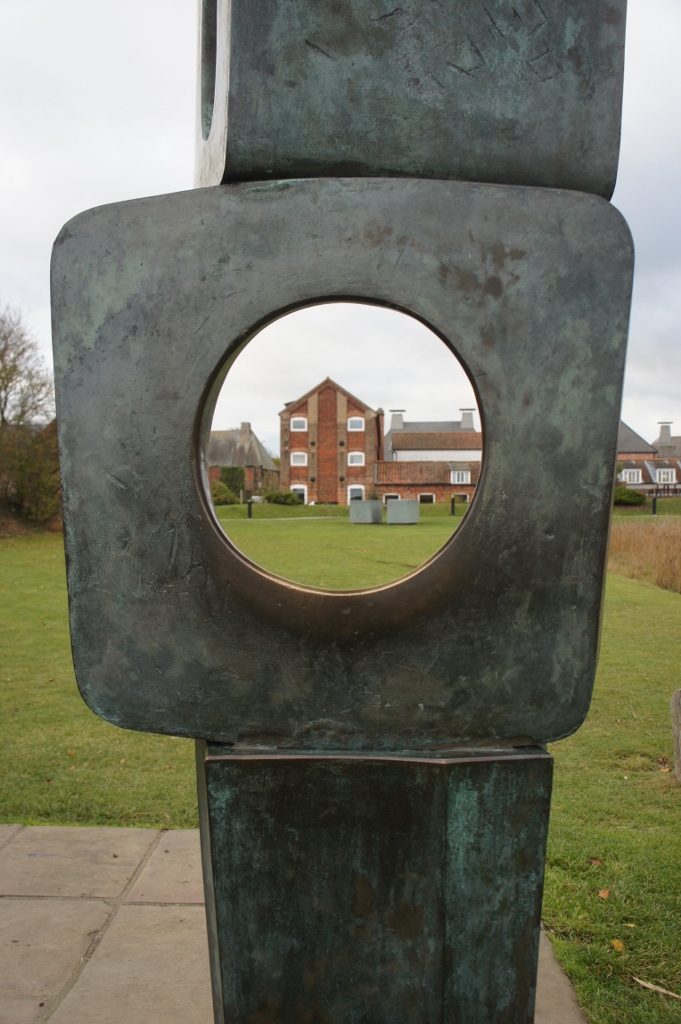
Part II
We went the next day with Henry’s niece who also lives in Suffolk East Anglia to Ramsholt another even more ancient rural church on the shore. The site of the church dates all the way back to the seventh century although the tower we see today is from the 13th century. You can see that the round tower has been restored. It is unusual because it is buttressed. According to the warden, the bottom was built by Saxons, a little on the rough side, and the rest by the Normans who were skilled with stone building.
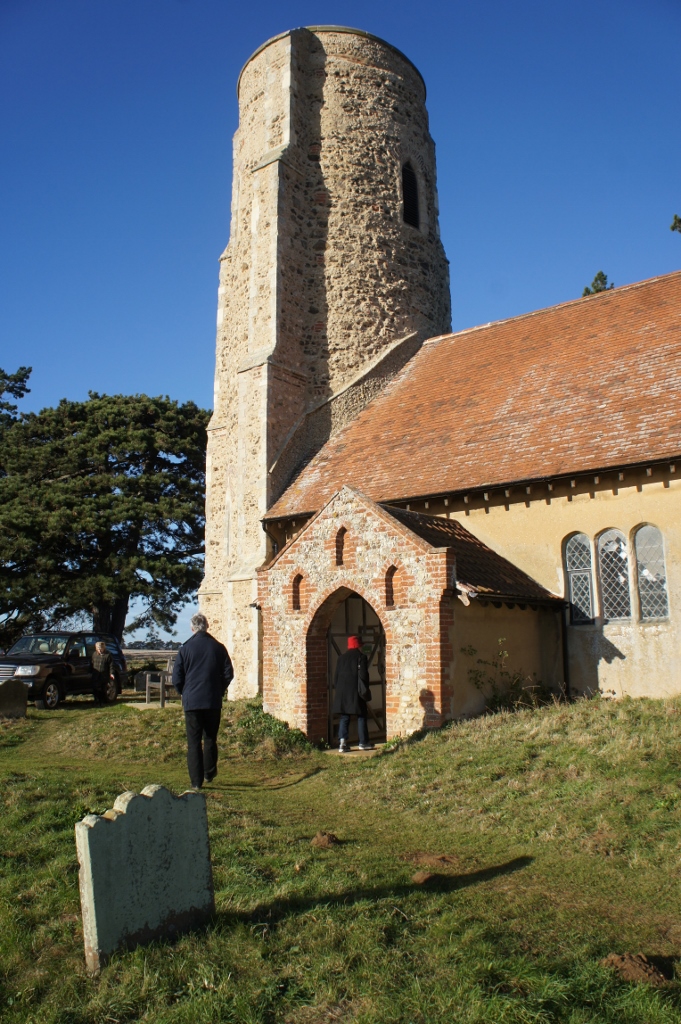
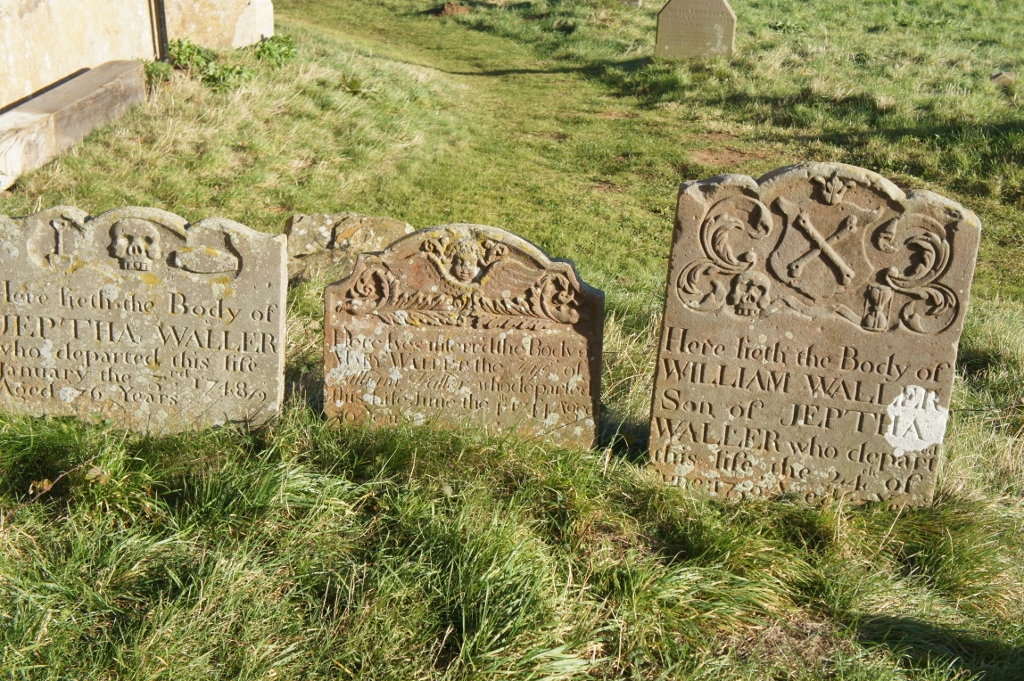
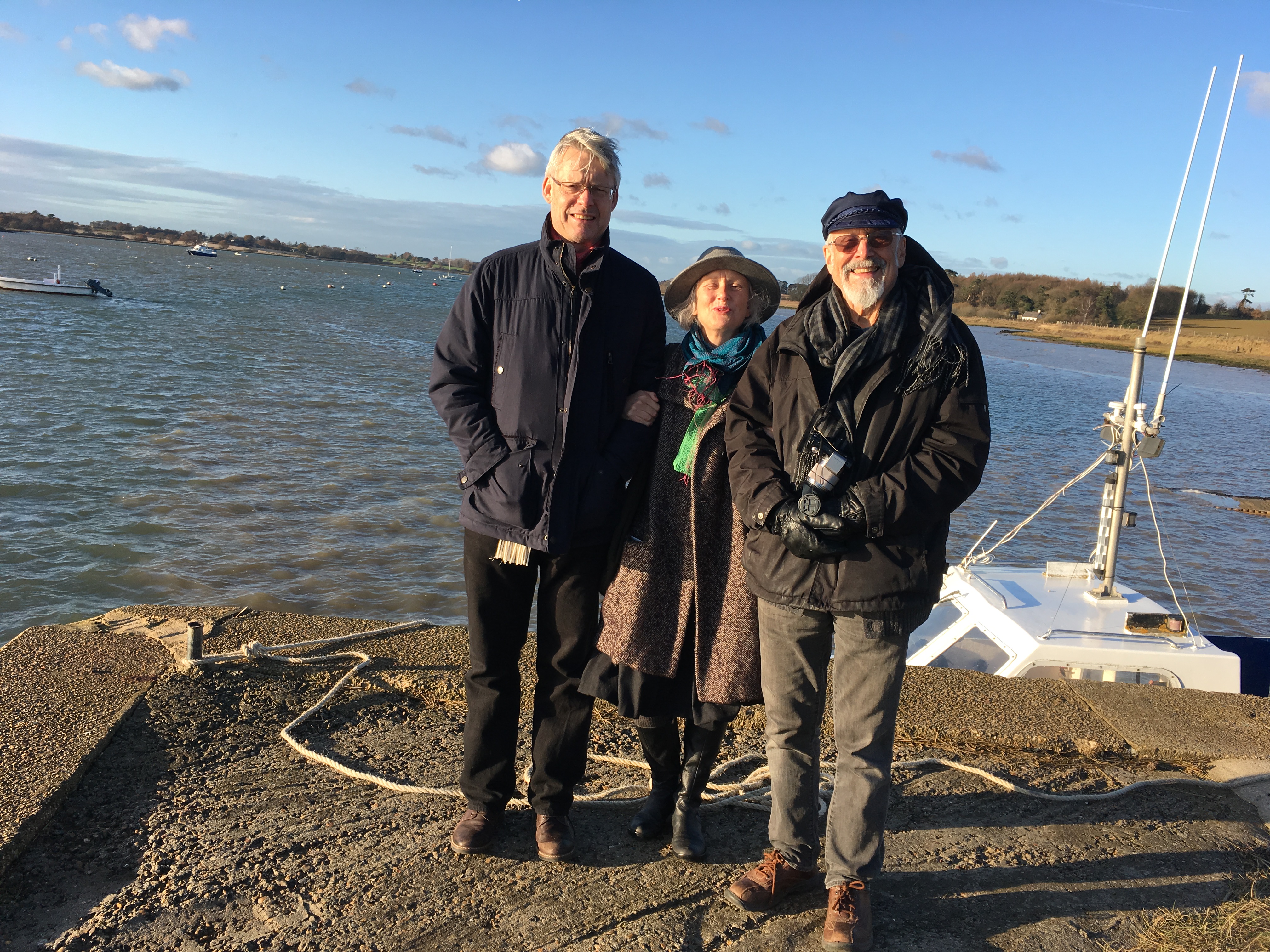
Henry’s niece Tig Thomas center and husband Adam, with Henry on cold Suffolk Coast
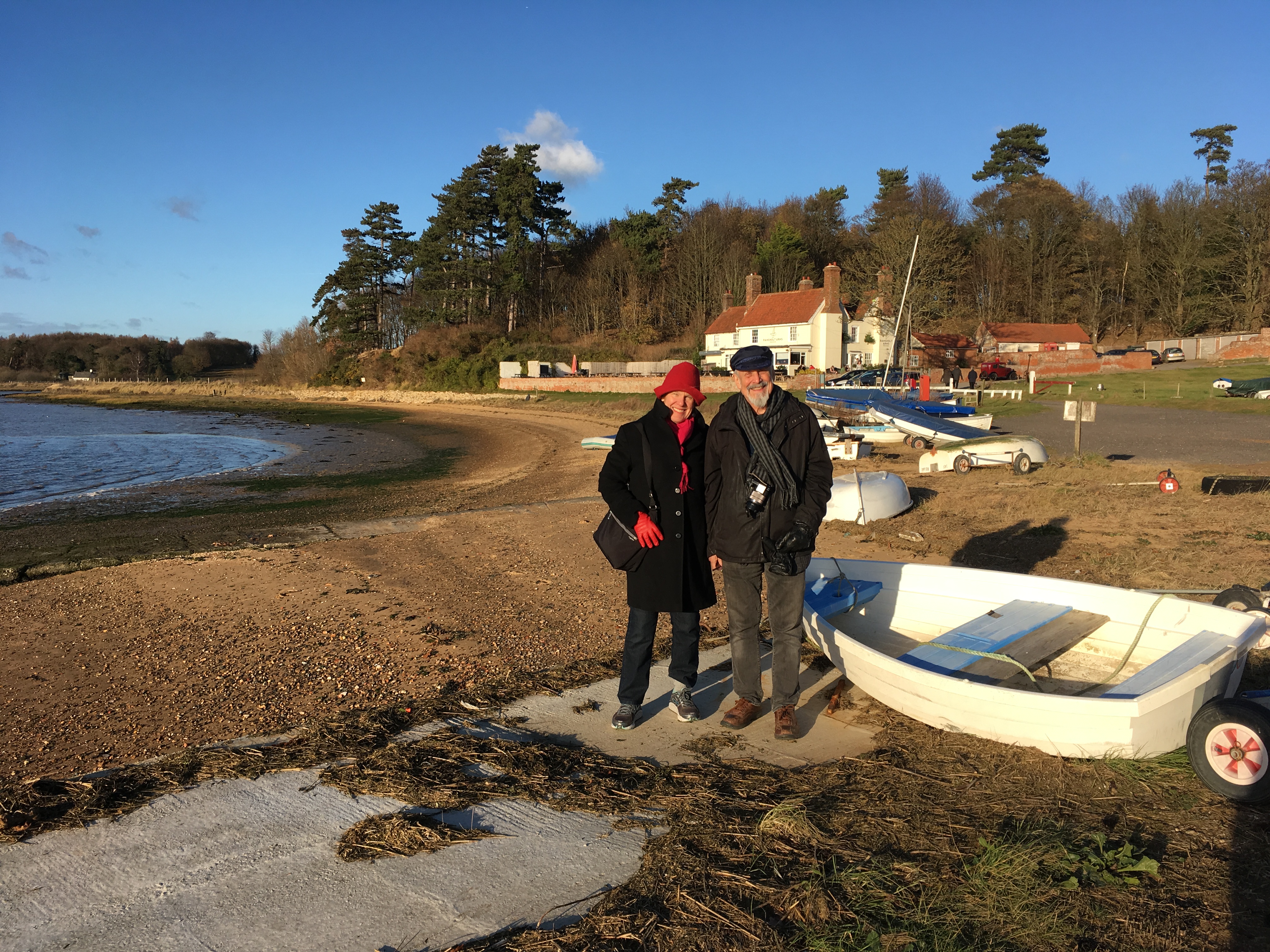
This entry was posted on January 27, 2018 and is filed under Suffolk East Anglia, Uncategorized.








